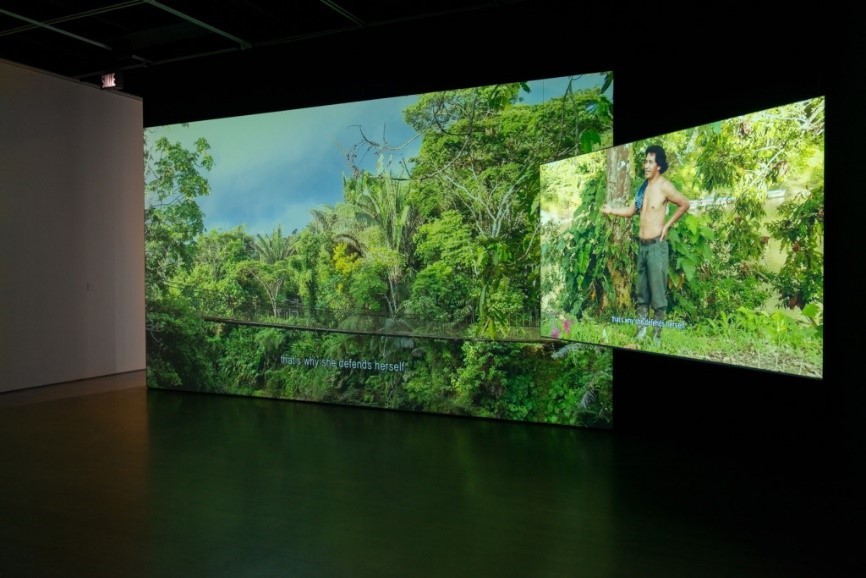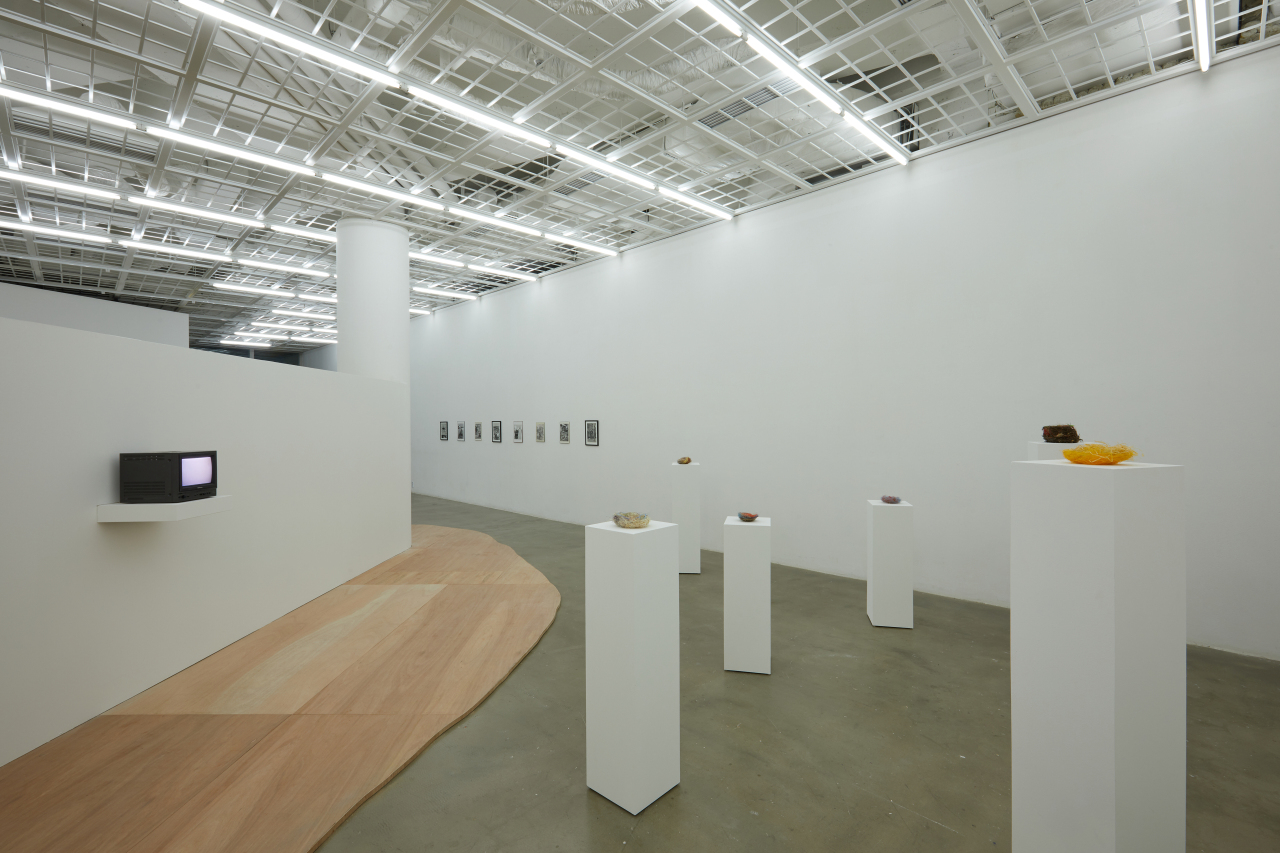‘The Island of the Colorblind’ looks at relationships in contemporary world
By Shim Woo-hyunPublished : May 20, 2019 - 17:28
Manon de Boer’s video work “Bella, Maia and Nick” shows three teenagers playing instruments in a room with an ocean view. Without any intention to create harmony, they make different sounds with classical instruments. The camera watches the three together, though they sound dissonant combined.
This work by the Dutch artist living in Brussels explores how individuals learn how to live together, said Kim Hae-ju, deputy director of the Art Sonje Center.
This work by the Dutch artist living in Brussels explores how individuals learn how to live together, said Kim Hae-ju, deputy director of the Art Sonje Center.


It is part of “The Island of the Colorblind,” which kicked off at the center Friday. The exhibition also features works by Kim Ju-won; Manon de Boer; Bjorn Braun; Xu Tan; Ursula Biemann and Paulo Tavares; Yu Araki; Rim Dong-sik and Woo Pyong-nam; and Part-time Suite.
The exhibition looks at different relationships in the contemporary world, including those with the natural environment and technology. The artworks shown at the center are the artists’ attempts to examine alternative ways of perceiving, befriending and relating to the surroundings.
For instance, in one work, the artists highlight sovereignty over the natural environment.
“Forest Law,” a collaboration between Brazilian architect Paulo Tavares and artist Ursula Biemann, focuses on the oil-and-mining frontier in the Ecuadorian Amazon, which is undergoing large-scale extraction activities. The 2014 documentary deals with a series of landmark legal cases that involve the indigenous people of Sarayaku pleading for the rights of nature, including a trial they won in 2012.
In another work, animals were involved in the production process.
Artist Bjorn Braun introduces his collaboration with zebra finches. His work features a group of sleeping nests made over several months with two birds. The nest sculptures are accompanied by a 2012 video that recorded the making process with the birds.
Another of Braun’s works, in which he cast the tracks of a field mouse in plaster, is also installed, highlighting the boundaries between the artificial and natural.
The exhibition also features artists depending on technology to determine what should be displayed.
Part-time Suite presents a video installation, “Neighbors ver. 1.0,” which shows real-time images sent from inexpensive IP cameras available online as well as those installed in and outside of the art center. The Korean artist group mostly allowed algorithms to decide what to show onscreen, reflecting a relationship unique in the digital era -- the one between people and those that look upon them.
“We hope visitors take each work as ‘an island’ to visit,” Deputy Director Kim said.
The exhibition got its name from a book of the same title, by neurologist and naturalist Oliver Sacks, about the small Micronesian atoll of Pingelap, where an unusually large portion of the population is affected by total color blindness.
The exhibition runs through July 7.
By Shim Woo-hyun (ws@heraldcorp.com)












![[Today’s K-pop] BTS pop-up event to come to Seoul](http://res.heraldm.com/phpwas/restmb_idxmake.php?idx=644&simg=/content/image/2024/04/17/20240417050734_0.jpg&u=)





![[KH Explains] Hyundai's full hybrid edge to pay off amid slow transition to pure EVs](http://res.heraldm.com/phpwas/restmb_idxmake.php?idx=652&simg=/content/image/2024/04/18/20240418050645_0.jpg&u=20240418181020)

![[Today’s K-pop] Zico drops snippet of collaboration with Jennie](http://res.heraldm.com/phpwas/restmb_idxmake.php?idx=642&simg=/content/image/2024/04/18/20240418050702_0.jpg&u=)